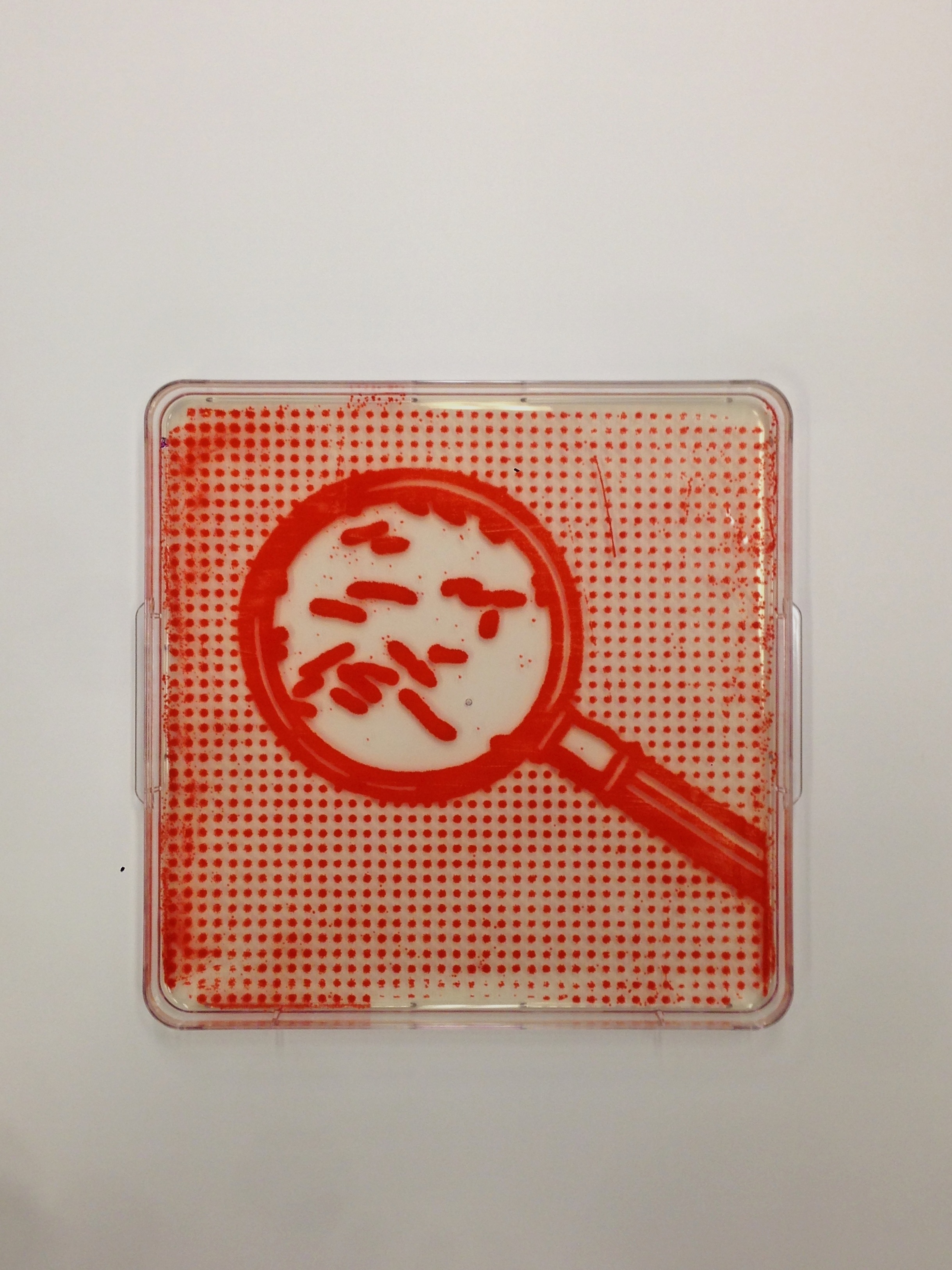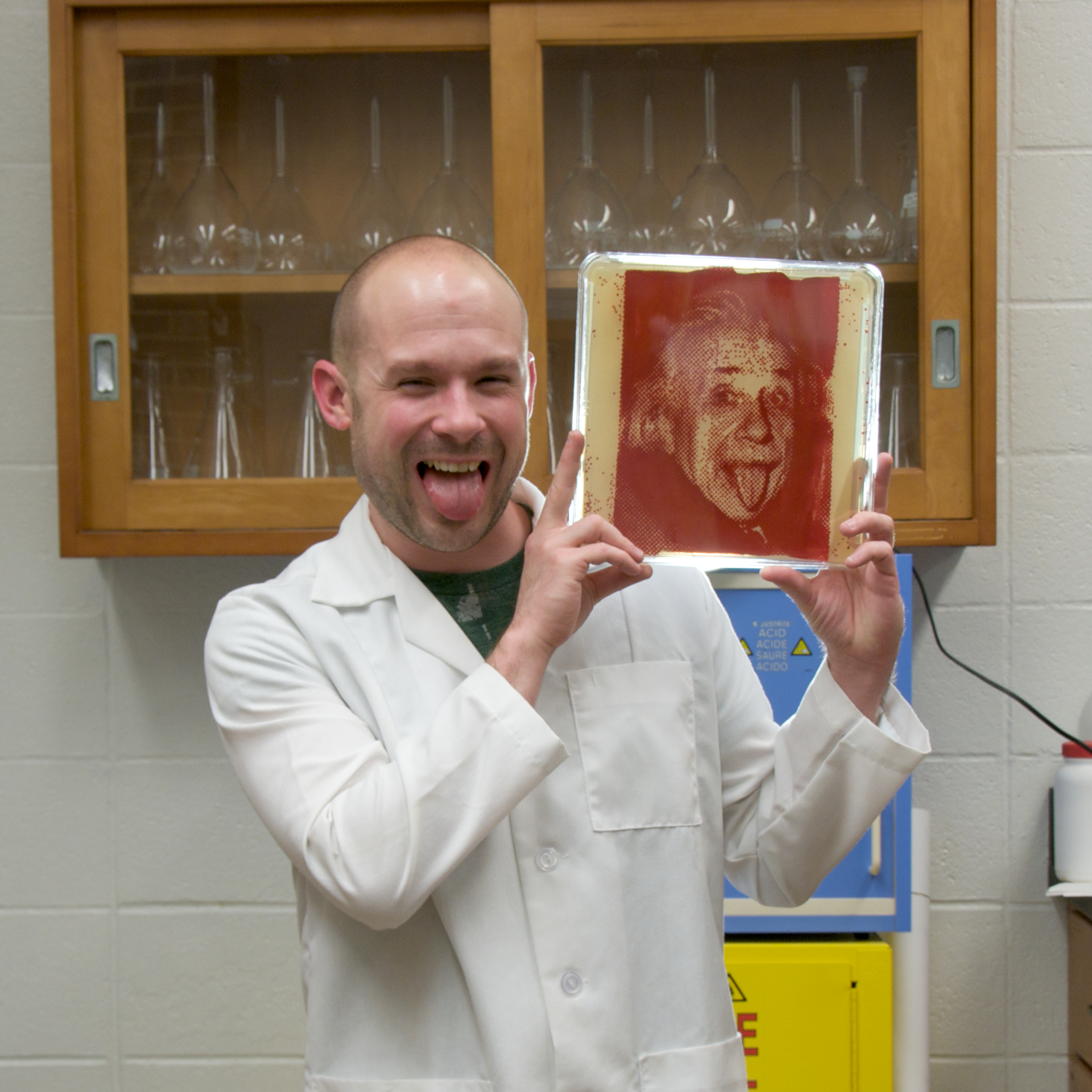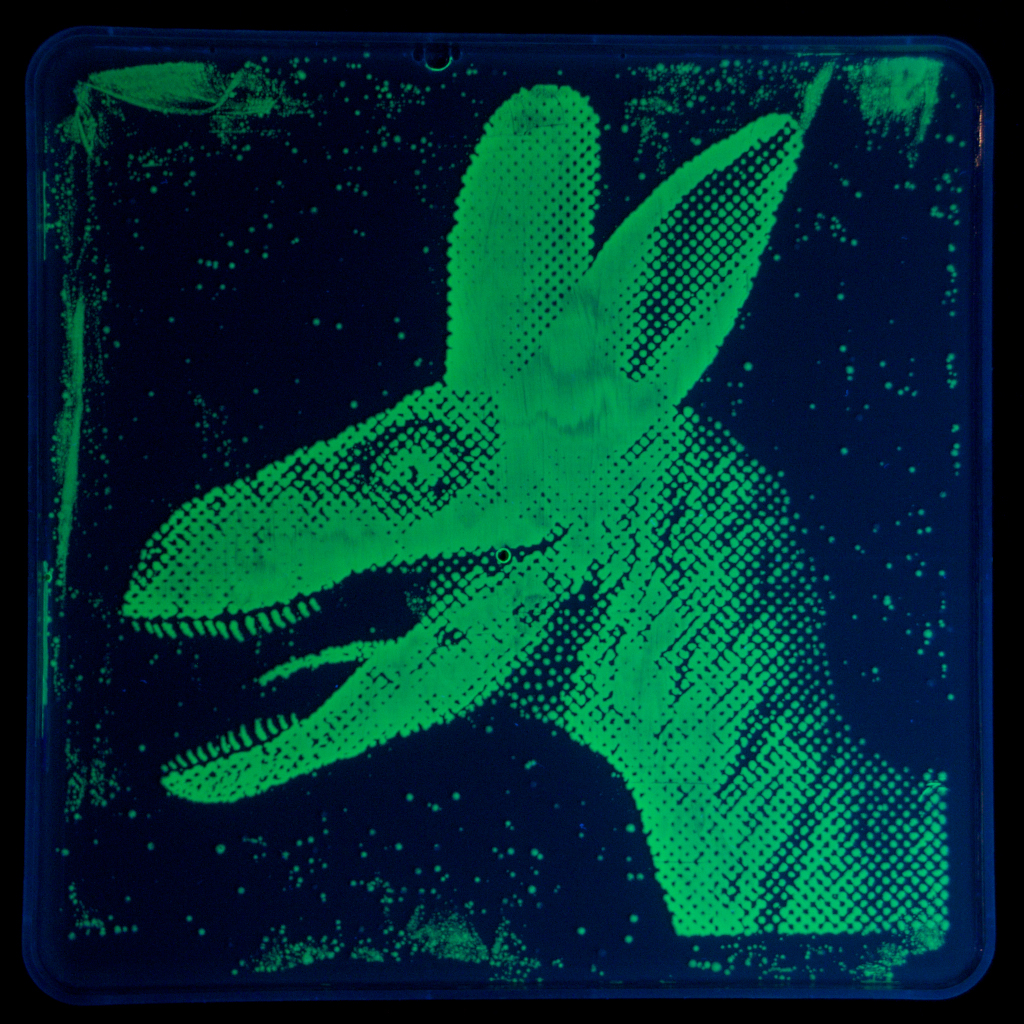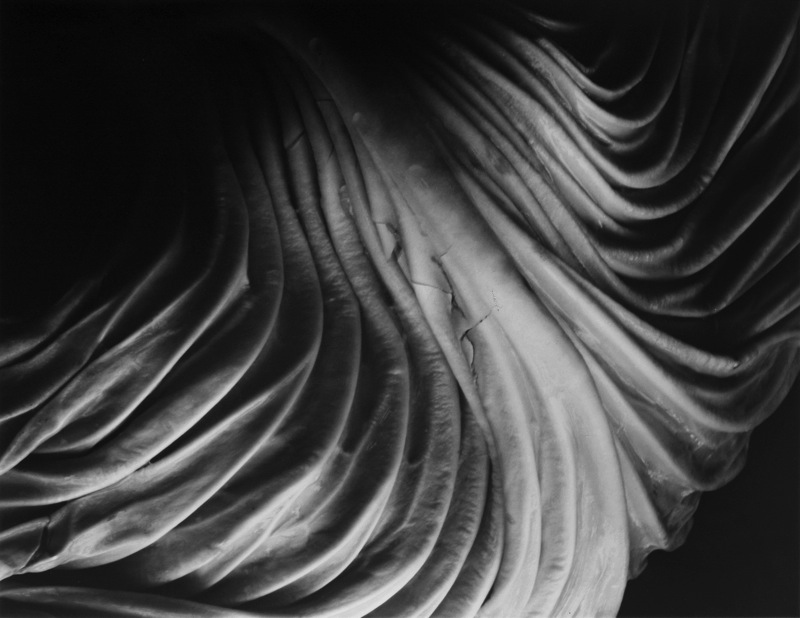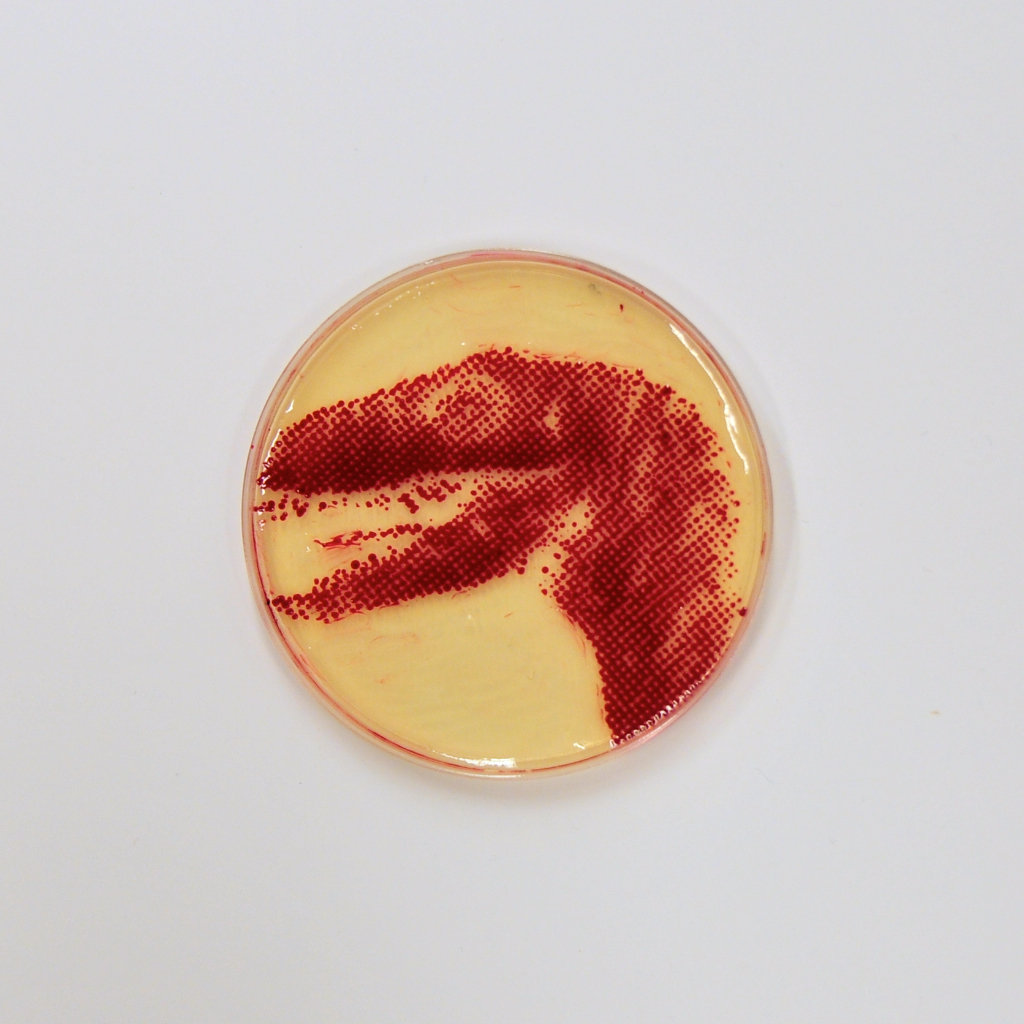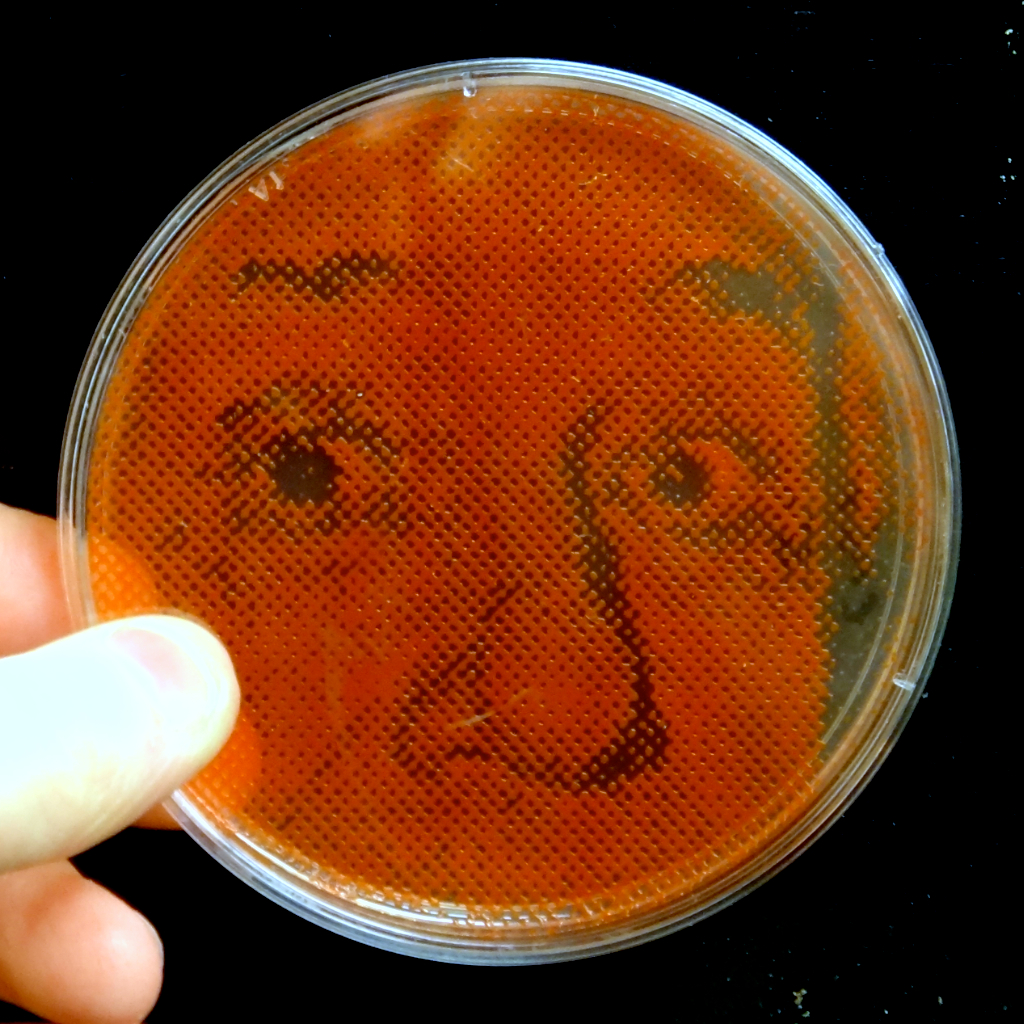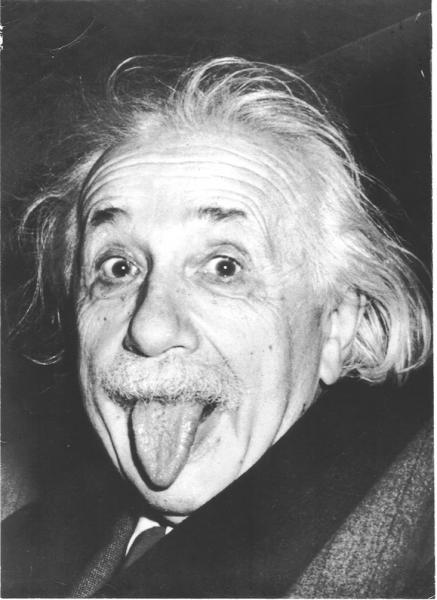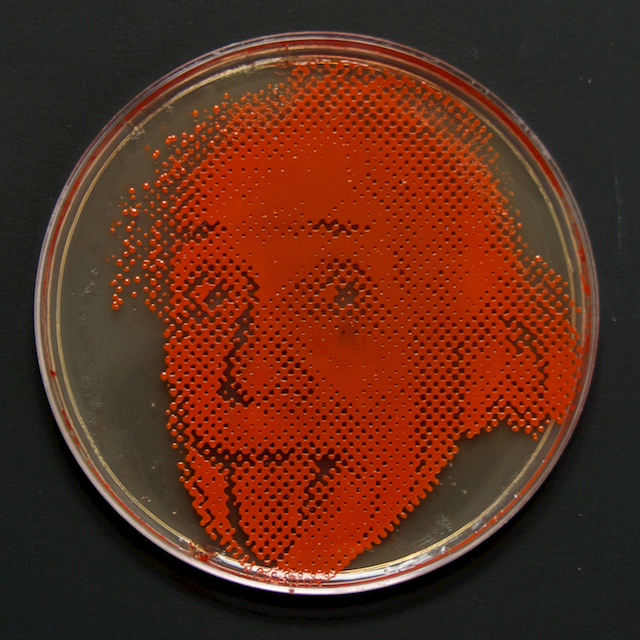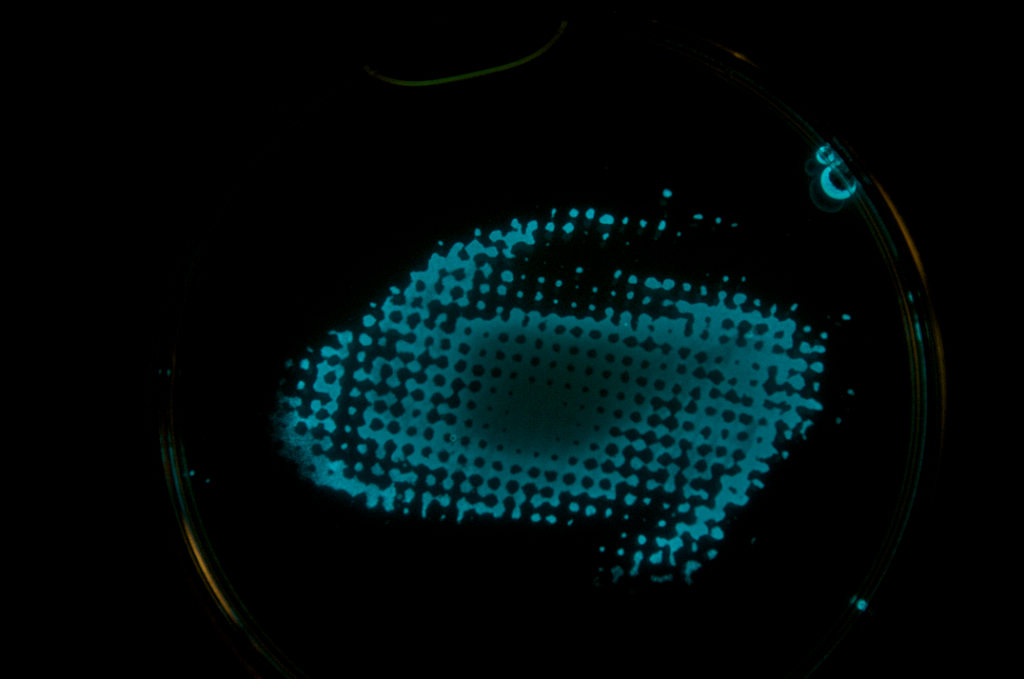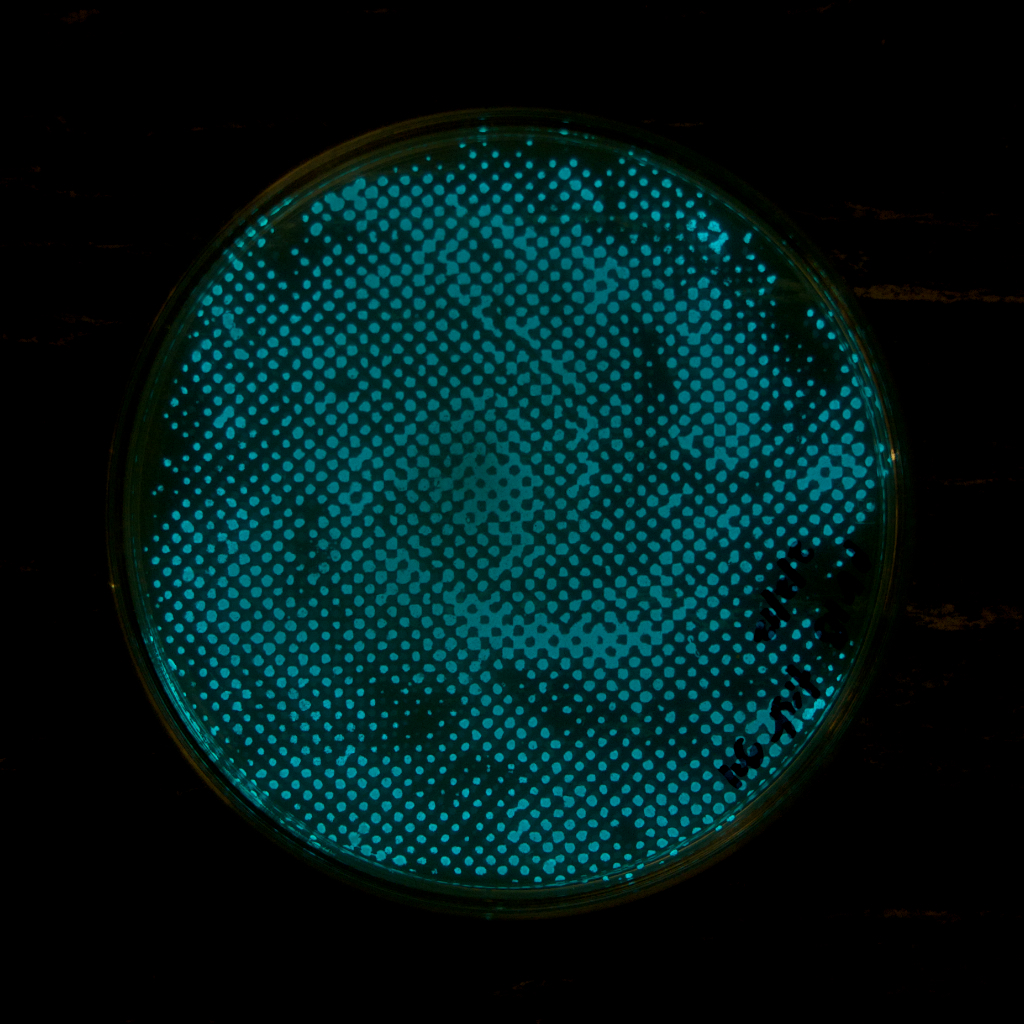Science
Star Stuff, Galaxies of Genetically Modified E. coli /
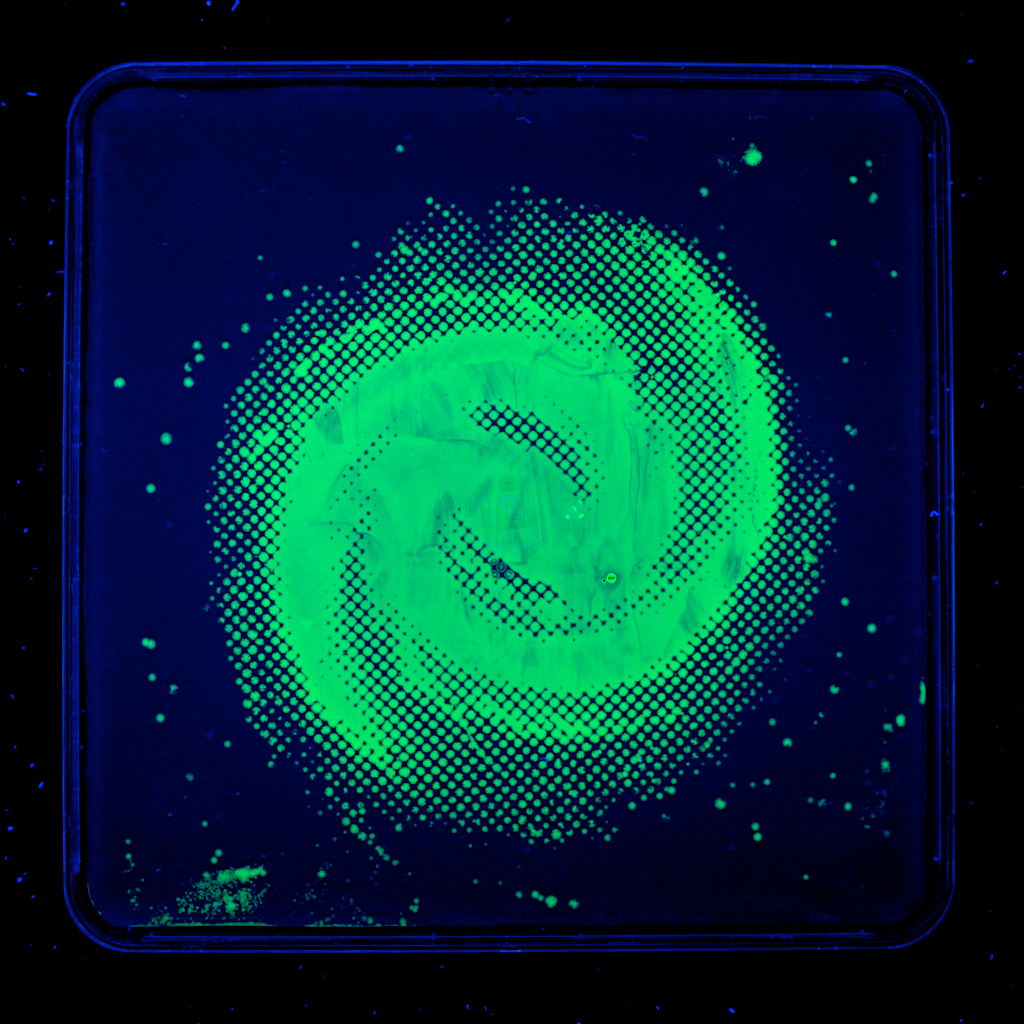 There is one source of inspiration that has earned the attention of poets, artists and scientists alike, the night sky. Whether it be for spiritual reasons, such as the Native Americans who believed the stars were a world for their ancestors, or for reasons as practical as sailors navigating this world; the stars have been a guiding source for humanity for centuries. Poets, such as Edgar Allen Poe in his poem Evening Star, have turned to the stars as companions and muses burning in the cold darkness of night. Painters have also been known to draw on the stars for artistic guidance. One of the most well known paintings in all of history, Van Gogh’s Starry Night, serves as a tribute to the awe inspiring beauty possessed by these heavenly bodies. However, what science has to say about the stars may quite possibly trump the examples listed above in both their poetic and artful natures.
There is one source of inspiration that has earned the attention of poets, artists and scientists alike, the night sky. Whether it be for spiritual reasons, such as the Native Americans who believed the stars were a world for their ancestors, or for reasons as practical as sailors navigating this world; the stars have been a guiding source for humanity for centuries. Poets, such as Edgar Allen Poe in his poem Evening Star, have turned to the stars as companions and muses burning in the cold darkness of night. Painters have also been known to draw on the stars for artistic guidance. One of the most well known paintings in all of history, Van Gogh’s Starry Night, serves as a tribute to the awe inspiring beauty possessed by these heavenly bodies. However, what science has to say about the stars may quite possibly trump the examples listed above in both their poetic and artful natures.
“We are all made of star stuff”, this is a quote made famous by the late Carl Sagan. When he spoke this phrase Sagan was referring to the scientific theory that all matter was first created in a star. Science has revealed the stars as the origin of all atoms larger than hydrogen. There are few ideas more poetic or more artful than the suggestion that all matter, all life, has a common origin in one of these guiding lights burning brightly in the night sky.
This installation consists of a visual exploration of the romance and splendor embodied by this scientific theory. The work entitled Star Stuff is an installation of living phosphorescent bacterial photographs of the cosmos taken by the Hubble telescope. Each celestial form is comprised of billions and billions of genetically engineered E. coli that have grown in such a pattern that they form a photographic reproduction of a celestial object. The installation is meant to instill in the viewer a sense of wonderment and awe reminiscent of the emotions experienced by poets and artists as they gazed at the stars. Suggesting that the scientific view of the universe is not cold and passionless, that in actuality, it is deeply poetic.
[slideshow]
[gallery link="file" columns="4"]
Bacteria Portraits, Bacteriogoraphy /
As a former microbiologist recently turned visual artist, I seek to create work that is less of an intersection of art and science and more of a genuine fusion of the two. During my graduate research I invented a new medium that combines photographic process with microbiological practices. The process is very similar to darkroom photography only the enlarger has been replaced by a radiation source and instead of photographic paper this process uses a petri dish coated with a living bacterial emulsion. I believe that great beauty and poetry reside within the theories woven by scientists. And that it is through the unification of art and science that these treasures can be fully explored and made accessible to the world at large.
When I was an undergraduate perusing a degree in Biology, I found myself utterly mesmerized by what I was learning. Each day’s lecture brought to my attention new insights into the complex systems at work in the world around me. The more I learned, the more mystified I became. Science grew into a way for me to revel in the beauty of the universe. I began to better understand and appreciate my place among all of the other particles floating in space. After obtaining my bachelors degree, I began working as a microbiologist in a commercial lab setting. Quickly I began to lose sight of all that I had found romantic about science. Shortly after this disinfatuation of science, I began an adventure into the field of photography. Photography developed into my new method of inquiry. Everything that I had missed about science I rediscovered in photography. For me, the two seemingly disparate fields of study served the same purpose, a way to explore my connection to everything else around me.
[gallery link="file" columns="2"]
Albasaurus: The World's First Day-Glo Velocirabbit (Dear Mr. Kac) /
As a former microbiologist recently turned transgenic bio-artist, I have been told by numerous people that I should look at your work. So, like any normal person would do, I googled you. As you can imagine, most of the results were about Alba, the day-glo bunny. It just broke my heart to read that you never got to take Alba home and love her like all rabbits deserve. After going to all of the trouble of trying to buy a test specimen from a genetic research lab you ended up empty handed. It's so sad that you only got to hold Alba once. I read that some people not only believe that you never saw Alba but that she may never have existed at all. But I did an image search and found a picture of you holding a rabbit. Therefore, I know that she must exist and that you did in fact meet her. I was so inspired by the story of Alba that I contacted a colleague and friend of mine, Dr. Henry Wo, a geneticist at InGen, and asked him to create a chimeric animal of my own design. And thus Albasaurus, the worlds first day-glo Velocirabbit, was born. Or should I say hatched. My original intention was to give Albasaurus to you, as a gift, to help fill the void left in your heart by Alba. However, after holding Albasaurus in my arms and then introducing her into my family, I just cannot bear to part with her. As a small consolation, I am sending you a bacteriograph of Albasaurus. I created it in my lab using E. Coli that I genetically modified with the DNA for GFP (don't worry, the bacteria has been preserved and sterilized). Although it's not quite Albasaurus, the bacteriograph is transgenic bio-art. I hope this token serves to lessen your grief, if even just a little bit.
P.S. I have included some photographs of Albasaurus to prove to you that she is real and to show you what a good and loving home she has here.
Sincerely yours,
Zachary Copfer
[slideshow][gallery link="file" columns="2"]
X Ray, Artistic, Vision /
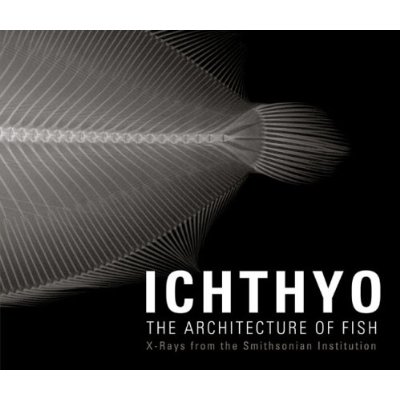 The above image is a postcard and hyperlink for an upcoming exhibition at the Smithsonian's National Museum of Natural History. The show features radio-graphs taken by Sandra Raredon. For over 20 years she has been working at the Smithsonian taking x-rays of fish specimens for the museum and other researchers. At smithsonianmag.com you can view an absurdly fun interactive display that allows you to alternate between the image of the outside of the fish and the x-ray version.
The above image is a postcard and hyperlink for an upcoming exhibition at the Smithsonian's National Museum of Natural History. The show features radio-graphs taken by Sandra Raredon. For over 20 years she has been working at the Smithsonian taking x-rays of fish specimens for the museum and other researchers. At smithsonianmag.com you can view an absurdly fun interactive display that allows you to alternate between the image of the outside of the fish and the x-ray version.
The phrase "x-rays of fish" doesn't exactly bring to mind visions of high art but that is exactly what these photographs are. The images are gorgeous, quiet and poetic. The forms and tones in the works inspire a contemplation and reverence of the elegant beauty found on all levels of the universe. While thumbing through the images on the website, I was taken back to the photographic styles of Minor White and Edward Weston, a few of the early masters of photography. I can only imagine how breathtaking Raredon's prints must be to witness in person.
The Evolution of an Image /
These are new pieces I just completed for my "Code" portfolio. This body of work is an aesthetic exploration of the similarities between the genetic code and computer programing code. To create these works, I first use a dissecting scope to take photographs of organisms commonly used in genetic testing. Then, I open the digital image files in programming software and alter the actual hex code of the file. All of the variations seen in the images come from what I call "digital mutations" of the source code. After I crop the original image down to square format, zero post processing is done in imaging software. Every single alignment and color shift is produced at the code level. In fact, when I am working on a file I can't see the image at all, I am only looking at line after line of computer coding.
Previously, I was using this method to create collections of images that together formed an interesting composition. However, the process has begun to creep into the works. So, I am now experimenting with showing the progression of a single photograph as I continue to mutate the code until it becomes something new. These new pieces speak much more to the role of mutation as a catalyst for change in both the digital files and in living organisms. Feel free to check out some of the older code works in my portfolios above and let me know what you think about the new direction.
Bringing Dinosaurs Back With Life /
As part of the testing and refinement stage of my bacterial photography process, I decided to pay homage to the subject matter that helped me to come up with the idea in the first place, dinosaurs. The two images below are visual evidence of the evolution of my bacterial art.
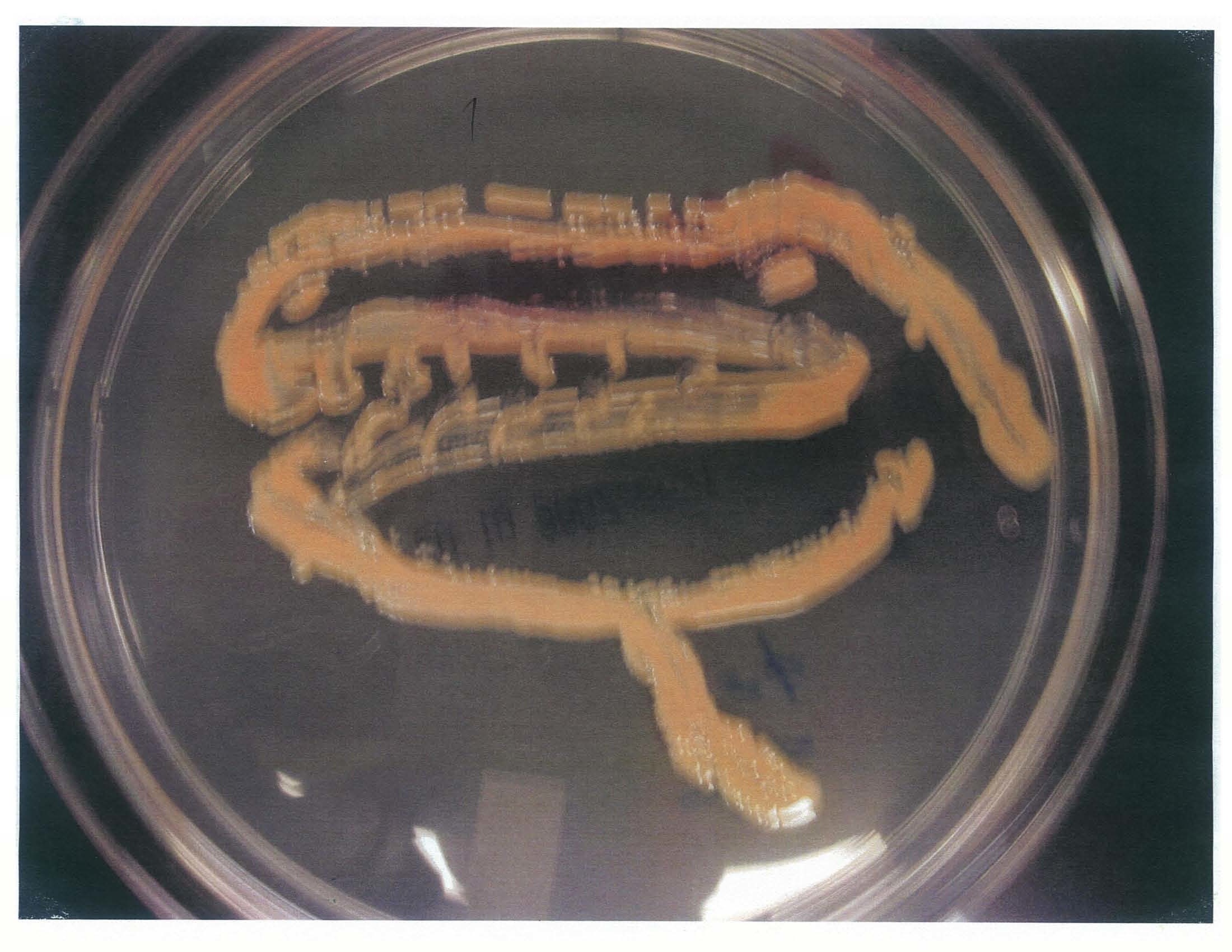
The first image, Staphlosaurus, was a bacterial "drawing" I did just for fun back when I was working in the microbiology lab. It simple served as a way to entertain myself and coworkers during a mundane laboratory test. The second image, Serratiasaurus, has played a role in the development of "bacteriography", my new form of photography. Like many people, as a child I was obsessed with dinosaurs. I just never quite outgrew that phase and probably never will. So, I found it only appropriate that one of my first images grown in bacteria be of a dinosaur. I mean really, what's cooler than a dinosaur grown in bacteria...nothing! I figure if I can't bring them back to life why not bring them back with life.
Bacteriography /
As a former microbiologist recently turned visual artist, I have begun searching for ways to synthesize the seemingly dichotomous fields of science and art. I believe that the separation of art and science is a misconception shared by many who are unfamiliar with the simple elegance of scientific theories. For me the world of science has always been a beautiful poetic place, more artful than anyplace else I have ever known.
In an effort to more deeply explore and then share the connection between art and science, I have designed a new photographic process that I have coined "Bacteriography". Put simply, this is a process to develop photographs in plates of bacteria. That is to say, the bacteria literally grow to form photographic images. The process is very similar to traditional darkroom photography, except instead of light sensitive photo paper I use plates of bacteria.
The first body of work I am creating with this new method is entitled Star Stuff. This work consist of photographs of distant galaxies, stars and supernovas taken by the Hubble telescope that i have then developed in plates of E. coli that I have genetically modified to be bioluminescent. Star Stuff serves as a visual exploration of the famous quote from Carl Sagan "We are all made of star stuff". When he said this, Sagan was referring to the scientific theory that every atom in our bodies was first created in a star. Personally, I can't think of anything more beautiful, anything more poetic or more artful than a common celestial birthplace for all life on Earth.
Are We Smarter Than a Tree? /
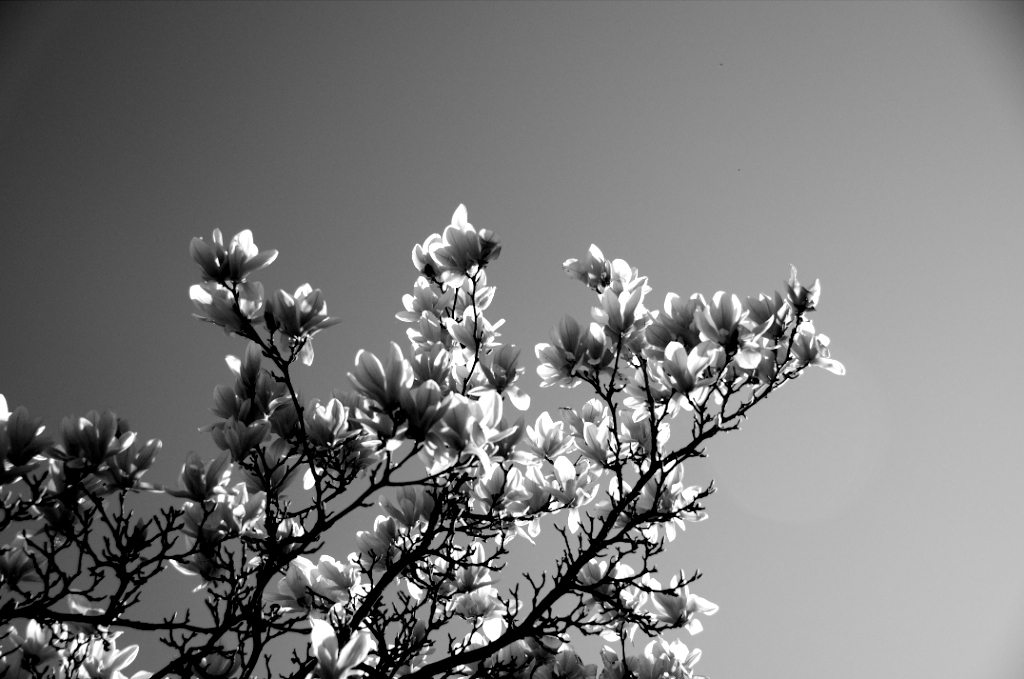 NPR: The Wisdom of Trees
The above article from NPR highlights yet another example of how amazingly intricate the turning gears of the universe are. The branching forms of trees have long been observed as a symbol of elegance, an embodiment of a complexly simple beauty. In Eastern philosophy, the tree stands as a reminder to remain flexible, to sway with the winds of life instead of fighting them. Many cultures contain references, including Tolkien’s Lord of the Rings, depicting trees as old and wise beings. Well now, thanks to Leonardo da Vinci and Christophe Eloy, a modern day physicist, the world has new insight into the innate knowledge possessed by these ancient organisms. It turns out that the mathematical pattern all trees follow when they are forming their branches just happens to lead to the most aerodynamically stable configuration possible. The collective knowledge of humanity took hundreds of years studying the math and physics of aerodynamic engineering only to reach a solution that was "known" by trees long before the first human admired their beauty. Once again, a pursuit of science leads to the discovery of poetry.
NPR: The Wisdom of Trees
The above article from NPR highlights yet another example of how amazingly intricate the turning gears of the universe are. The branching forms of trees have long been observed as a symbol of elegance, an embodiment of a complexly simple beauty. In Eastern philosophy, the tree stands as a reminder to remain flexible, to sway with the winds of life instead of fighting them. Many cultures contain references, including Tolkien’s Lord of the Rings, depicting trees as old and wise beings. Well now, thanks to Leonardo da Vinci and Christophe Eloy, a modern day physicist, the world has new insight into the innate knowledge possessed by these ancient organisms. It turns out that the mathematical pattern all trees follow when they are forming their branches just happens to lead to the most aerodynamically stable configuration possible. The collective knowledge of humanity took hundreds of years studying the math and physics of aerodynamic engineering only to reach a solution that was "known" by trees long before the first human admired their beauty. Once again, a pursuit of science leads to the discovery of poetry.
Art At the Speed of Light, Literally /
[vodpod id=Video.15813716&w=425&h=350&fv=%26rel%3D0%26border%3D0%26] This is absolutely jaw dropping! A couple of researchers over at that little school, what’s it called, oh yeah MIT, developed a camera that literally captures images at the speed of light. Now, you might be saying, “don’t all cameras work at the speed of light?”. And I’m going to go ahead and tell you, no, they don’t. In recent years there have been some serious advances in the frame rate capabilities of cameras. This has produced some stunning slow-motion effects that, from the normal perspective of the human eye, seem to freeze motion perfectly (see Phantom video).
http://youtu.be/LRo-L9zYf-M?hd=1
Now imagine that instead of being able to observe water emerging from the tap you can actually document the journey of photons of light as they are emitted from the lamp on your nightstand. This new camera is so fast it can capture light as it spreads across the room. Sure, in the video, the researchers discuss the practical medical applications of the technology. But imagine this in the realm of the least practical field known to man, art. This camera combined with the frivolous imaginings of an artist could really shed some light, excuse the pun, on what our sluggish human optical systems observe as mundane events.
Science, just another lens in my camera bag /
 In the December 2011 issue of Scientific American there is a feature on a microphotography photo contest. The SA website has a stunning slideshow of the winning images from the contest. The article discusses how microphotography is an offshoot of science where amateurs and professionals alike can produce stellar results. What saddens me is that many of the individuals producing these images are rarely interested in the science or theoretical implications of what they are photographing. They are merely finding something that looks cool under the scope and trying to create a beautiful image. Now don’t get me wrong, I don’t mean to demean what these artists are doing. However, I am disconcerted with the growing trend of referring to this type of work as scientific art. The melding of science and art has become a trendy buzz phrase that is all to often misused. Work such as that featured in this slideshow doesn’t explore the science at all. They are simply photographers using science as another lens for their cameras. Artists like these help me to realize what I want my work to do. I wish to create work that truly explores the art present in the ideas of science. I don’t want to use science as a way to merely create beautiful representations of what the eye alone cannot see. I am working to use science and art to redefine the viewer’s perspective on the beauty that lies within what the mind can see.
In the December 2011 issue of Scientific American there is a feature on a microphotography photo contest. The SA website has a stunning slideshow of the winning images from the contest. The article discusses how microphotography is an offshoot of science where amateurs and professionals alike can produce stellar results. What saddens me is that many of the individuals producing these images are rarely interested in the science or theoretical implications of what they are photographing. They are merely finding something that looks cool under the scope and trying to create a beautiful image. Now don’t get me wrong, I don’t mean to demean what these artists are doing. However, I am disconcerted with the growing trend of referring to this type of work as scientific art. The melding of science and art has become a trendy buzz phrase that is all to often misused. Work such as that featured in this slideshow doesn’t explore the science at all. They are simply photographers using science as another lens for their cameras. Artists like these help me to realize what I want my work to do. I wish to create work that truly explores the art present in the ideas of science. I don’t want to use science as a way to merely create beautiful representations of what the eye alone cannot see. I am working to use science and art to redefine the viewer’s perspective on the beauty that lies within what the mind can see.
An Artist's Eye, A Scientist's Mind and A New Perspective /
 There is an old cliché that goes something like this, “magic is nothing more than science we do not yet understand”. Although there is a great deal of truth in this statement, there is also an unfortunate and inaccurate sentiment that precipitates from this line of thought. The idea that once the science of a phenomenon is understood its magic then fades into the past where it can never again serve as a source of wonderment. This belief paints science as a machine out to strip the natural world of her shroud of mystery. For hundreds of years poets have said that every time science reveals an explanation for one of the universe’s secrets it pilfers a source of beauty and inspiration from the artists and poets of the world. As alluring as this theory might seem, especially to artists and poets, it is ultimately false. Every question answered by science progenies a plethora of new questions, every mystery explained spawns new deeper and more intricate mysteries. Scientists are all too often aware of the aesthetics in their theories but unable to translate them into a form that can be digested by those in other fields. There is, however, a solution to exposing and expressing the natural beauty of science. The answer is to approach science from the perspective of an artist. A working scientist is bound by many regulations and must follow certain protocols in order to ensure the authenticity of his work. An artist, on the other hand, is free from these confines. This freedom allows artists greater maneuverability within the theories and thus provides them with a free reign approach to the study and expression of the splendor rooted in science. Great beauty and poetry reside within the theories woven by scientists and it is only through the unification of art and science that these treasures can be fully explored and made accessible to the world at large.
There is an old cliché that goes something like this, “magic is nothing more than science we do not yet understand”. Although there is a great deal of truth in this statement, there is also an unfortunate and inaccurate sentiment that precipitates from this line of thought. The idea that once the science of a phenomenon is understood its magic then fades into the past where it can never again serve as a source of wonderment. This belief paints science as a machine out to strip the natural world of her shroud of mystery. For hundreds of years poets have said that every time science reveals an explanation for one of the universe’s secrets it pilfers a source of beauty and inspiration from the artists and poets of the world. As alluring as this theory might seem, especially to artists and poets, it is ultimately false. Every question answered by science progenies a plethora of new questions, every mystery explained spawns new deeper and more intricate mysteries. Scientists are all too often aware of the aesthetics in their theories but unable to translate them into a form that can be digested by those in other fields. There is, however, a solution to exposing and expressing the natural beauty of science. The answer is to approach science from the perspective of an artist. A working scientist is bound by many regulations and must follow certain protocols in order to ensure the authenticity of his work. An artist, on the other hand, is free from these confines. This freedom allows artists greater maneuverability within the theories and thus provides them with a free reign approach to the study and expression of the splendor rooted in science. Great beauty and poetry reside within the theories woven by scientists and it is only through the unification of art and science that these treasures can be fully explored and made accessible to the world at large.
Jpeg Synthesis /
 Here is a new piece I just completed for my "Jpeg Synthesis" portfolio. This work is an aesthetic exploration of the similarities between the genetic code and computer programing code. To create these works, I first use a dissecting scope to take photographs of organisms commonly used in genetic testing. Then, I open the digital image files in programming software and alter the actual hex code of the file. All of the variations seen in the images come from what I call "digital mutations" of the source code. After I crop the original image down to square format, zero post processing is done in imaging software. Every single alignment and color shift is produced at the code level. In fact, when I am working on a file I can't see the image at all, I am only looking at line after line of computer coding. To see some of my earlier Code works, check out the mutations gallery under the works in progress tab on my blog menu.
Here is a new piece I just completed for my "Jpeg Synthesis" portfolio. This work is an aesthetic exploration of the similarities between the genetic code and computer programing code. To create these works, I first use a dissecting scope to take photographs of organisms commonly used in genetic testing. Then, I open the digital image files in programming software and alter the actual hex code of the file. All of the variations seen in the images come from what I call "digital mutations" of the source code. After I crop the original image down to square format, zero post processing is done in imaging software. Every single alignment and color shift is produced at the code level. In fact, when I am working on a file I can't see the image at all, I am only looking at line after line of computer coding. To see some of my earlier Code works, check out the mutations gallery under the works in progress tab on my blog menu.
His Favorite Artist?... Einstein /
 Being in graduate school for fine art, I am constantly asked to identify contemporary artists whose work inspires me, my heroes of current art. Shawn Brixey is a name that always ends up making an appearance on my list. In the piece pictured above, he converted the sound of voices reading poetry into a beam of light. This alone is unremarkable considering a great deal of the electronics we use everyday do this very same task. However, Brixey then shot this light at a vacuum chamber containing small graphite particles. When hit with the light, the graphite particles overcame the force of gravity and began to float in the center of the chamber. At this state, the particles mimicked the physics of celestial bodies, free from Earthly gravity and in a vacuum. Unsurprisingly and yet still magically, the graphite particles took on the familiar forms of galaxies. These tiny graphite galaxies were shaped by a beam of light that was infused with poetry. So in a sense, the miniature galaxies were a physical manifestation of the poetry itself. Tiny shimmering galaxies of poetry that elude to the less literal but equally moving poetry that formed our very own Milky Way Galaxy.
Being in graduate school for fine art, I am constantly asked to identify contemporary artists whose work inspires me, my heroes of current art. Shawn Brixey is a name that always ends up making an appearance on my list. In the piece pictured above, he converted the sound of voices reading poetry into a beam of light. This alone is unremarkable considering a great deal of the electronics we use everyday do this very same task. However, Brixey then shot this light at a vacuum chamber containing small graphite particles. When hit with the light, the graphite particles overcame the force of gravity and began to float in the center of the chamber. At this state, the particles mimicked the physics of celestial bodies, free from Earthly gravity and in a vacuum. Unsurprisingly and yet still magically, the graphite particles took on the familiar forms of galaxies. These tiny graphite galaxies were shaped by a beam of light that was infused with poetry. So in a sense, the miniature galaxies were a physical manifestation of the poetry itself. Tiny shimmering galaxies of poetry that elude to the less literal but equally moving poetry that formed our very own Milky Way Galaxy.
What really strikes me about Brixey's work is his admiration for the science he uses in his work. Many contemporary artists using science aren't saying much about science itself. They just use technology to make interesting pieces without regard of what is being said for or about the science behind them. Some even go as far as to achieve what I consider the bastardization of science (Alba the DayGlow bunny). Brixey was once asked who was his favorite artist. He replied very simply, "Einstein". He then went on to discuss how, if polled, scientists would agree that Einstein's work was art but if one were to ask artists they would of course call it science. This belief that science is art is what Brixey's work seems to boil down to at its core. He often uses literal poetry, science and technology to stimulate the creation of an awe inspiring and naturally beautiful phenomenon. His work serves to remind us that true poetry is rooted in the processes of the universe around us and is not limited to text printed on the page of a book.
Neutrinos faster than light, take two /
[vodpod id=Video.15717499&w=425&h=350&fv=] This clip from NewsyVideos provides a nice summary of the chatter surrounding the recent discoveries going on over at the LHC (really expensive machine that smashes protons into one an other). Although this story originally broke back in September, I decided to post about it now because the folks at CERN (the research group working the LHC) have conducted a second experiment which confirmed their original findings.
Back in September CERN released a paper stating that they found a particle which could possibly maybe travel faster than the speed of light. You see, when they smash protons together they get these wonderful little particles called neutrinos. Just for fun they decided to direct a stream of these neutrinos to a detector located under a mountain in Italy 732 Km (about 454 Miles) away from the LHC.
The neutrinos arrived at the detector more quickly than expected. In fact, when they crunched the numbers they found that in order to make the trip as quickly as they did the neutrinos must have traveled faster than the speed of light. This is of course against the known rules of the universe. Back in the early 1900's Einstein set the cosmic speed limit to c (the speed of light). Because of the gravity of the implications this find could have on our understanding of the physical world, CERN has been uber careful in checking and rechecking and rechecking their results. Actually they made about 15,000 measurements. Recently, they even tried modifying their test by firing the neutrinos in short bursts separated by large breaks. The reason for this was to decrease the margin of error in the experiment and provide a much more precise measurement. They obtained the same results.
Even with this new confirmation, the scientific community is extremely skeptical of this finding. First of all, it very much goes against what physicists have believed for over 100 years. But more importantly, as of now, the tests have all been conducted by the same group on the same equipment. Until another group independent from OPERA carries out a totally different experiment and gets the same results scientists will not take the notion of particles zooming past light seriously. The media however, seems to be having a field day with this. And why not? Anything that gets science in the headlines and gets people talking about the implications of physics on our daily lives in our daily lives is a good thing.
So what are the implications of a particle which travels faster than light? Most seem to be reporting that this finding, if confirmed, would turn our world upside down. As though suddenly the world might implode. The more likely scenario is that after the initial hoopla we will find that most of the theories currently in place will still accurately describe the universe. Equations and theories will shift and settle a bit but all that we currently believe will not be thrown out the window. I keep hearing talk that this will completely upset special relativity. And it will, but only sort of. You see most of special relativity is actually based on the fact that light travels at a constant speed. So, even if this constant speed of light isn't the universal speed limit it still, according to our perspective, means that time and space are relative. One possible bit of fun that could come from particles traveling faster than light is time travel. The speed of time, at least for us, is basically the same as the seed of light. This is because when an event occurs there is no way for us to know it until the light reaches us. You can think of it as though we are traveling into the future at the speed of light. So, if we could send something faster than light it would move faster than we would into the future. Now clearly we can't build spaceships made of neutrinos and zoom off faster than light. However, we could, in theory, package information into neutrinos and send them flying into the future.
As exciting as all of this might sound, it is still much more likely that we will find the neutrinos in fact do not travel faster than light. Even if that is what finally comes of this at least the process could prove to be a wonderful chance to teach the importance of the scientific method. And in the meantime allow us to dream about what kind of message we might send to the future. Of course if we were to send a message into the future, the people in the future would already know what it says because the message was written and sent in their past.
Do you believe time travel is possible? Do you think the above statement about knowing the message is true or do you have a different view of how time travel might work?
Mix a drink and pop some popcorn cause NOVA is on tonight /
[vodpod id=Video.15699036&w=425&h=350&fv=embed%3Dtrue%26amp%3Bstart%3D0%26amp%3Bwidth%3D512%26amp%3Bheight%3D288%26amp%3Breporting_url%3D%26amp%3Bsession_id%3D2e958735c0b215d291a8ab819287a3c4%26amp%3Bvideo%3Dhttp%3A%2F%2Fvideo.pbs.org%2FvideoPlayerInfo%2F1984907962] Yep, tonight is another night to pour a gin and soda and pop some popcorn because Brian Greene will be on NOVA again. Tonight (check local listings for times) PBS will air the third of four installments from Greene's The Fabric of the Cosmos series. If you missed the first two here is what you need to know:
1) Empty space is in fact not at all empty, it has structure and objects will mass warp that structure
2) Time is not a constant, it is completely relative to your perspective within the universe
After the one hour segment on The Fabric of the Cosmos PBS will rerun the second installment of Green's series on The Elegant Universe. These are both a must see for anyone interested in a fairly easily accessible explanation of the current theories of the universe. Feel free to come back here and post comments on the show after it airs!
Here is a link to NOVA, I'm pretty sure you can watch the past episodes in their entirety on the website!
Princeton University's Art of Science /
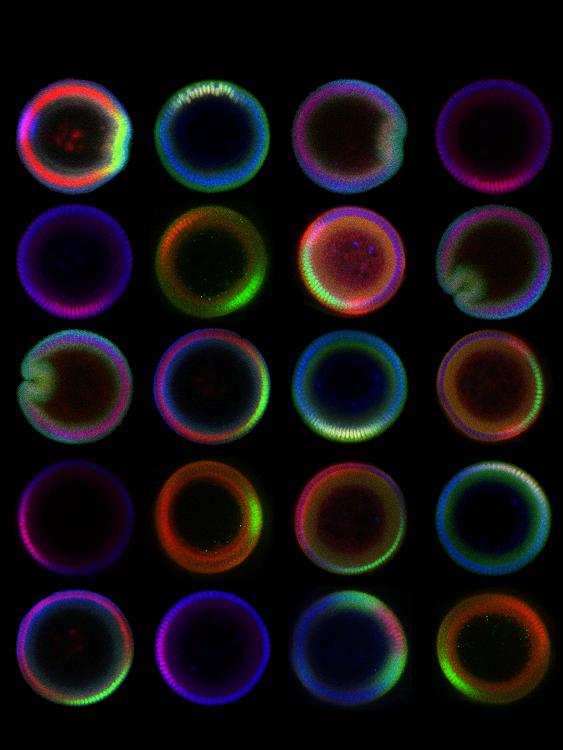 via The Art of Science - Slide Show - NYTimes.com.
via The Art of Science - Slide Show - NYTimes.com.
This link leads to a slide show the NY Times put together to feature some of the finalists in the Art of Science competition held by Princeton University. Although the images are gorgeous to flip through, for me, what truly makes these works art is how so many of them reference patterns that repeat themselves from the microscopic universe all the way up to the scale of galaxies. By looking inward we are also peering outward.
As a photographer, I enjoy that a lot of popular science art is achieved through some type of mechanically aided imaging of microscopic worlds. I think the reason this interests me so is that ever since the advent of the camera it has been used to bring to light things that the human eye alone cannot see. There are so many aspects of our everyday lives that remain invisible to us simply due to the restrictions of our biological optical systems. Photography has provided us with a means to change our perspective. For instance, Eadweard Muybridge's sequence of photographs of a horse running exposed the fact that a horse indeed does, for a moment, have all of its feet off the ground. This fact blew the world away, and made him a little money on a bet! Pretty soon people were arguing of which was the "real" truth, what the human eye saw every day or the new perspective that could only be gleaned through the apparatus of the lens. Today, mostly through scientific imaging, photography continues to reveal new versions of visual truths of our everyday world. And, as much as ever, these images and these truths are art.
Welcome to Science to the Power of Art /
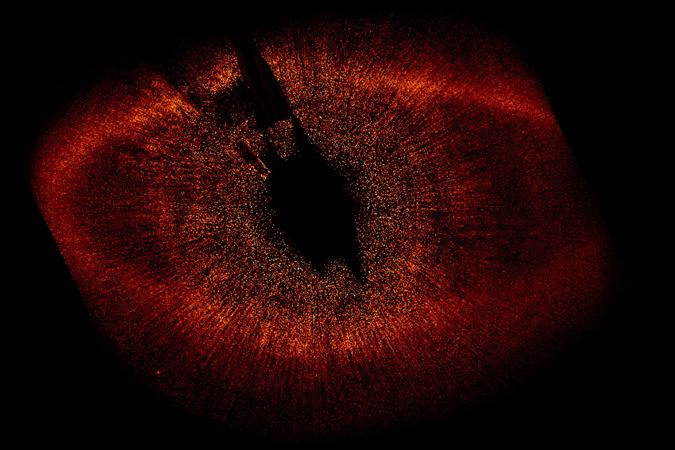
What I envision this blog being:
For me... as I continue to concentrate on creating art, I want to ensure that I don't lose sight of the science that has so deeply inspired me. My artwork is about the poetry and aesthetic beauty lurking within scientific theories. In order to remain in touch with this vision, I have created this blog as a place for me to post, discuss and keep fresh the science behind the art. Or was it the art behind the science?
For you... I hope this blog becomes a place for people to come and not only learn about and keep current with modern discoveries in science, but also to ponder the deep transcendental possibilities of these theories. I want this blog to be accessible to scientists, artists and to those who are none of the above. A place for artists to come and rethink their view of science, for scientists to revisit the role of art and for anyone else who is interested in exploring the overlap between the two fields.
